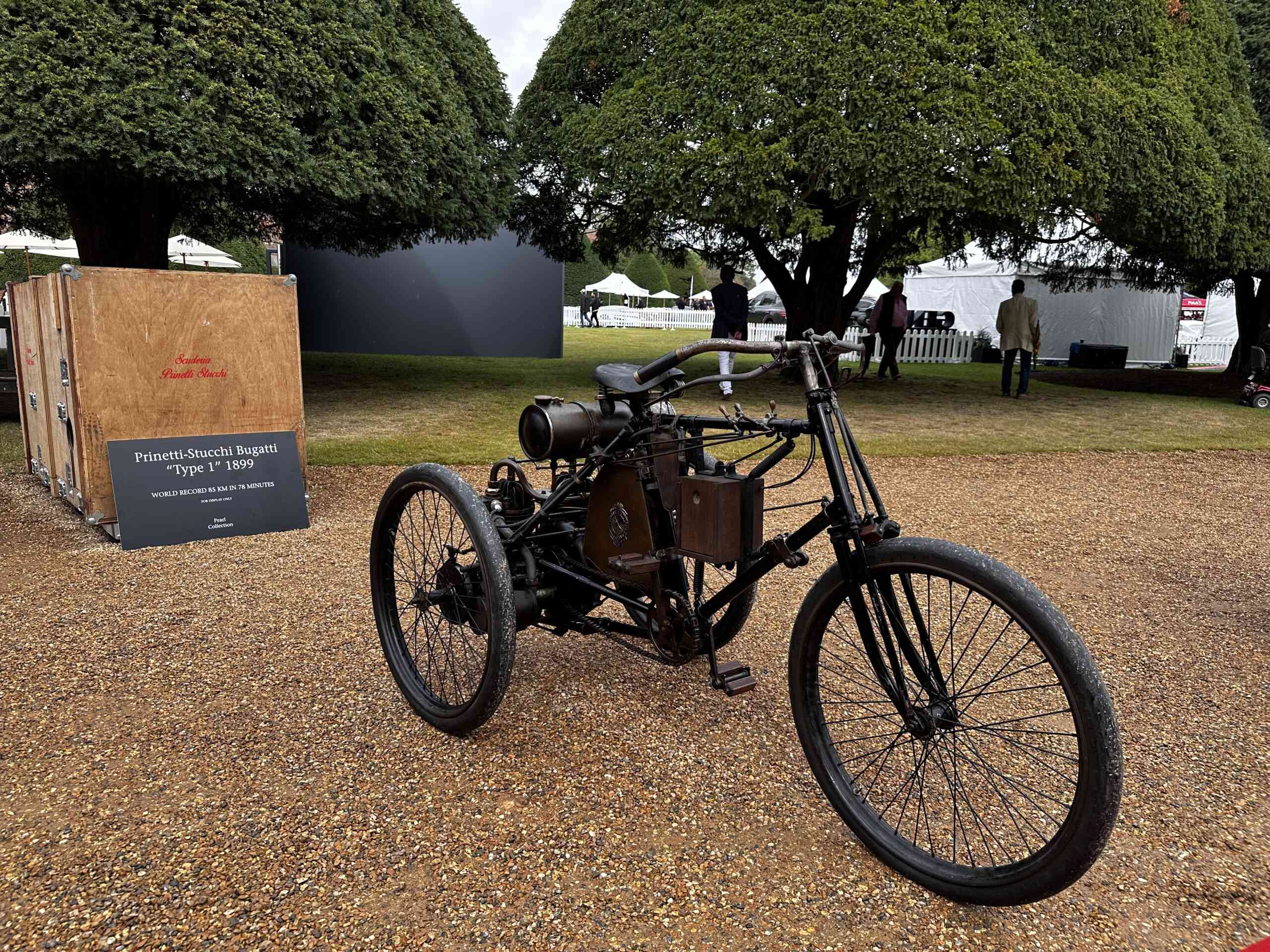
The Remarkable History of Fritz Burkard’s Pearl Collection
Concours of Elegance 2023 welcomed one of Switzerland’s most dedicated classic car custodians, Fritz Burkard, as “The Collector’. Fritz’s array of automobiles, known as the Pearl Collection, are drawn from across the spectrum, from vintage Grand Prix machinery to obscure 1960s one-offs and 21st century hypercars. Over the years his cars have picked up concours wins at events such as The ICE St Moritz, and last year his 1938 Delage D8-120S de Villars won Best of Show at the Concours of Elegance.
Despite these successes, for Fritz the vehicles are more than mere acquisitions – he believes that a love of such machinery comes from the heart, and doesn’t even think of himself as a collector. “I see myself more as a custodian, as somebody who has fun for myself and the people around me,” he told filmmaker Luca Pieri Pilotti. “I get very emotional around my cars, especially when I can see their history, when I can smell it.”
Rather than simply leaving the vehicles on static display, the Pearl Collection is enthusiastically exercised often, as Burkard explained: “Cars combine several passions: history, design, innovation, the feeling when you drive them, the sound. A car has its own aura; you feel it or you don’t. We at the Pearl Collection love quirky and unusual models. We show them, we race them and we use them.”
At this year’s show, the Concours of Elegance demonstrated the collection’s breadth, with a celebratory selection that goes from 1897 to 2022. Fritz has a particular affinity for Bugatti, so fittingly, the collection started with an 1897 Prinetti & Stucchi Tricycle (above), built by a youthful Ettore Bugatti. As an apprentice with Prinetti & Stucchi – which moved from making sewing machines to making licenced DeDion tricycles – Ettore was called upon by the Automobile Club of Italy to develop a twin-engined racing tricycle, namely the inaugural Bugatti Type 1. In 1899 it won its first race against stiff competition, at a world-record average speed of 64km/h over 90km. It would set the tone for Ettore’s life and work.
Meanwhile, the 1934 Bugatti Type 59 was the marque’s last Grand Prix car, and is considered to be the most elegant of all pre-war competition machines. Just six were built, and the Burkard example took third at the Monaco GP and overall victory in Belgium. The car was then redeveloped for sports car racing, with the supercharger removed and a dry-sump gearbox installed, while the chassis and bodywork were heavily revised. It became known as France’s fastest sports car, and was at one point owned by King Leopold III of Belgium.
Fritz also exhibited two examples of the Bugatti T57 – an Atalante and a Stelvio – while the collection was brought back up to date with a rare chance to see a Centodieci (above). This is Bugatti’s homage to the EB110 supercar of the 1990s, and a celebration of the marque’s 110th birthday. Although based on the Chiron, it is 20kg lighter, yet still has the 1578bhp quad-turbocharged W16 engine. Fritz’s car is one of just ten built.
His passions, however, are much wider, with two pre-war Italian heroes on display. The first was a 1933 Alfa Romeo SC Monza (above) first registered to Scuderia Ferrari. It was raced in the Monaco GP by Tazio Nuvolari, and went on to win the Swedish GP in August 1933. It also competed in the Mont Ventoux and San Sebastian hillclimbs. Upgraded and renamed SF28, it took part in the Mille Miglia and Targa Florio, and at the Circuito di Varese. Over the next decades the Alfa moved between several owners, and eventually it underwent a full restoration. Since then it has been a regular in Historic motor sport, and in 2012 it was driven from Germany to the Goodwood Revival. It duly won its race, before being driven back home.
Fritz’s 1939 Maserati 4CL Monoposto comes from when the marque was still relatively new, but had already built a name for itself in competition circles. The model debuted at the Tripoli GP, and just seven were built before the start of World War Two. This car, chassis 1564, was the prototype. It would see Works team action at Naples, Abbazia and Livorno, with the likes of Carlo Felice Trossi, Franco Cortese and Luigi Villoresi at the wheel. It continued to race post-war with Maurice Trintignant, before starting a less frenetic career as, variously, a hillclimber, a VSCC trials machine and a museum exhibit.
At the turn of the millennium it resumed its rightful place on the circuit, and it eventually joined the Pearl Collection in 2019.
Fritz also has a love of British marques, as exemplified by his 1934 Rolls-Royce Phantom II Continental (above). It was a glorious swansong for Rolls-Royce’s venerable six-cylinder sidevalve engine. Fritz’s car features unusual wind-tunnel-honed Streamlined Saloon coachwork from Park Ward and an upgraded engine. After gracing Park Ward’s stand at the 1934 Olympia Motor Show, the Phantom II had a distinguished ownership career, eventually settling across the Atlantic. In the early 2000s, after a full restoration, it appeared at both the Pebble Beach and Amelia Island Concours d’Elegance events.
Further Pearl Collection exhibits at the 2023 Concours of Elegance included the super-slippery, Pininfarina-designed Abarth 1000 record car ‘La Principessa’ from the 1960s (above), plus an exquisite Aston Martin DB5 (below) and a Peel P50 Coupé.
The post The Remarkable History of Fritz Burkard’s Pearl Collection appeared first on My Car Heaven.

